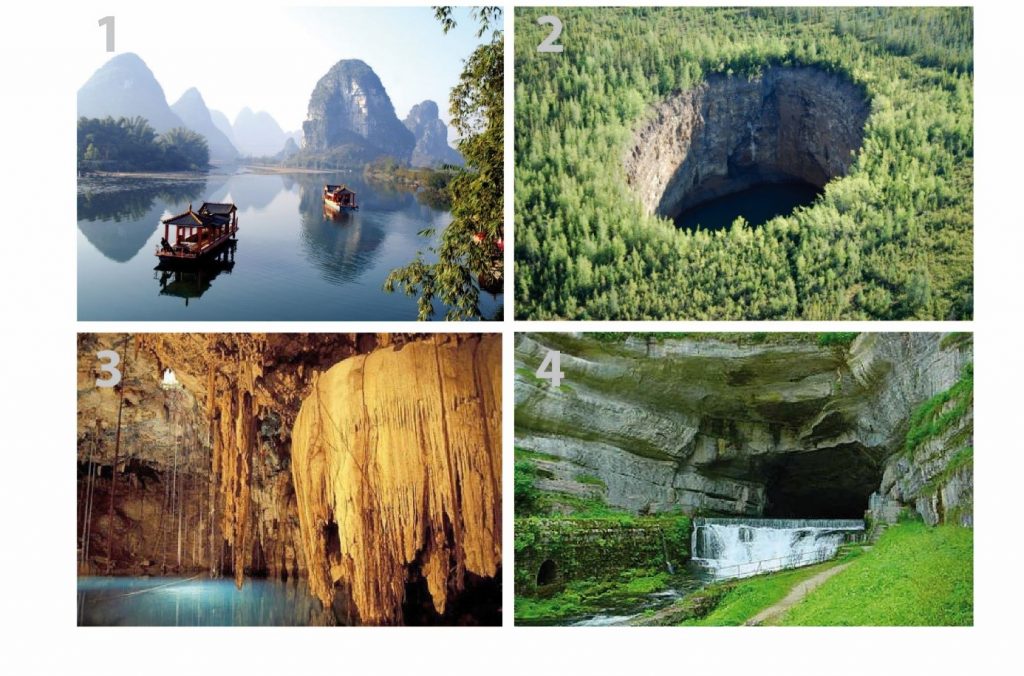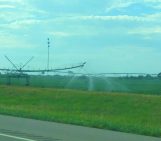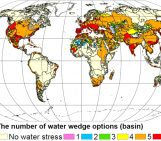
Episode 1 – A different introduction to karst
by Andreas Hartmann, Lecturer in Hydrology at the University of Freiburg
Usually, textbooks or lectures start with the theoretical background and basic knowledge of the topic they try to cover. Writing my first contribution to the Water Underground blog I want to take advantage of this less formal environment. I will introduce karst as I and many others around the world see it. As the most beautiful environment to explore and study.
Some of you may not be familiar with the term karst, its geomorphology or hydrological consequences. But I am almost certain that most of you have seen the landforms in the four pictures below.
Tower karst (1st photo) is typical of tropical regions. The picture below is taken close to Guilin, Southwest China, and I am sure many of you remember James Bond “The Man with the Golden Gun” and the beautiful tower karst islands at which parts of movie takes place (episode 3 will be a special feature about karst in the movies). Tower karst reaches heights up to 300m and often referred to by its Chinese name Fenglin or Fengcong karst, when occurring in a large number.
The 2nd photo shows the opposite landform: a huge hole in the forest ground. This is not a crater but a very big collapse sinkhole at Vermillion Creek, Northwest territories, Canada. It has an ellipse shape (60m x 120m) and 40 m below the surface, it has a lake whose depth has not yet been determined. You may not have previously heard the term sinkhole. But on the news one day you will hear stories of holes suddenly swallowing cars or entire houses in Florida or Mexico. If not due to mining, those were most probably collapses that occurred due to karstification.

Figure 1: (1) amazing tower karst Li River, Gulin, China (duskyswondersite.com), (2) collapse sinkhole , Vermillion Creek, Northwest territories, Canada (pinterest.com), (3) Kalisuci Cave at Jogjakarta, Indonesia (ourtheholiday.blogspot.com), (4) spring of the Loue River, France (wikiwand.com)
The most popular features of karst are caves, some of them as large as entire buildings. The 3rd photo shows how it may look inside a karstic cave (Kalisuci Cave at Jogjakarta, Indonesia). Note that there are plenty of stalactites and that there is a lot of water that will eventually find its way back to the surface discharging a karstic spring.
The 4th photo shows the spring of the Loue River, France, which is one of the largest springs in Europe. The volumes of water coming out easily compare to the discharge of medium size rivers. If you ever saw a spring that big it must have been a karst spring!
In the Of Karst! series, I will take you on a journey through more of these amazing characteristics of karst. I will show how its evolution over time can produce the landforms shown here. I will show how karstification affects the resulting movement of water on the surface, in caves systems and in karstic rock. And I will explain why karst is so relevant for our societies. In episode 2 (late June 2017) I will speak of how karst evolves. Episode 3 (early October 2017) will a special feature about karst in James Bond other famous movies.

Andreas Hartmann is a lecturer in Hydrology at the University of Freiburg. His primary field of interest is karst hydrology and hydrological modelling. Find out more at his personal webpage www.subsurface-heterogeneity.com




